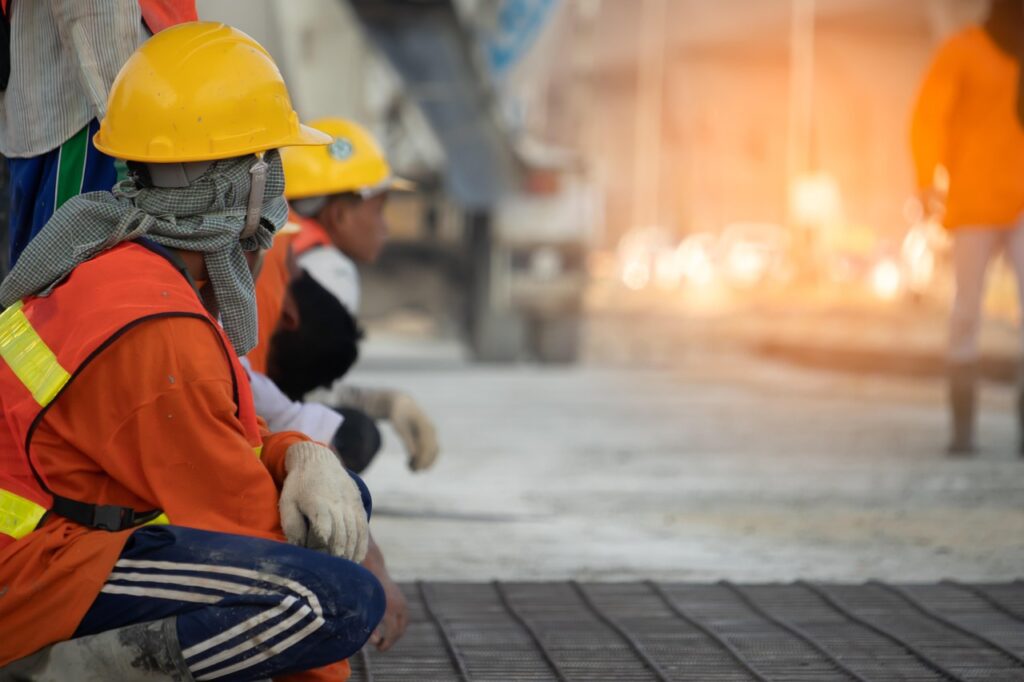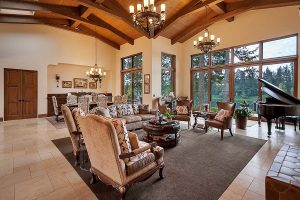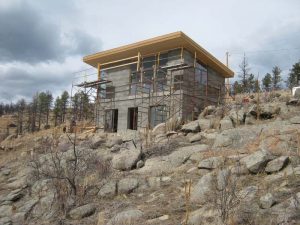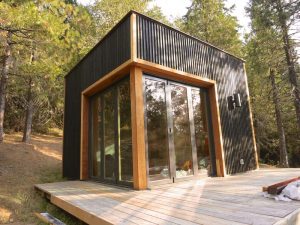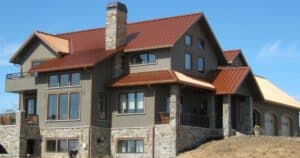Why Eco-Friendly Materials Matter
Did you know that buildings account for 39% of global energy-related carbon emissions? This number includes the energy needed to heat, cool, and power the buildings, as well as the carbon emissions from the materials and construction. Hence, selecting the right materials for your building can significantly reduce your carbon footprint. If you choose wisely, your eco-friendly construction materials can not only help to reduce your carbon footprint, but also improve your indoor air quality and your building’s energy efficiency while reducing waste and your energy bills.
The Use of Eco-Friendly Materials in Construction
First, let’s answer the question: What are eco-friendly materials? Eco-friendly materials are those materials that are renewable, recyclable, and non-toxic. They minimize environmental harm during their lifecycle, often using locally sourced, recycled, or natural materials. Eco-friendly materials also tend to be more energy-efficient than conventional materials. These materials can be used throughout the construction process, including insulation, structural materials, flooring, and finishes.
What Are Eco-Friendly Houses Made Of?
Eco-friendly houses are built with materials that are sustainably sourced, recycled, naturally insulating, and low in volatile organic compounds. Examples of materials that fit this description include: Faswall blocks, bamboo, cork, reclaimed wood, and mineral wool insulation.
Common sustainable components include:
- Recycled insulation
- Non-toxic paints and finishes
- Reclaimed or FSC-certified wood
- Low-impact structural materials like Faswall Blocks or rammed earth
Recycled Materials Used in Building Construction
a. Reclaimed Wood
Reclaimed wood has been salvaged from demolished or deconstructed structures like old buildings, bridges, or other structures. Collecting and reusing this wood that would otherwise be discarded reduces waste and demand for newly harvested timber.
b. Recycled Steel
Steel is a highly recyclable and structurally strong material. Using recycled steel reduces the energy required for production and greenhouse gas emissions by reducing the need for new extraction and processing of newly mined steel.
c. Recycled Plastic
Recycled plastic waste, such as from bottles or bags, can be converted into building materials like decking, siding, or flooring. Using recycled plastic is a cost-effective alternative to traditional materials and reduces landfill waste.
d. Recycled Concrete and Aggregates
Many people may not know this, but it is possible to recycle materials like concrete, asphalt, or brick by crushing the old materials to be used in new mixes. Reusing these crushed pieces of traditional aggregates cuts down on the raw materials needed to make concrete and asphalt.
e. Recycled Glass
Glass is another material that is easily recycled and has many uses in construction. Recycled glass can be used in tiles, countertops, glass blocks, and even incorporated into concrete.
5. Other Top Eco-Friendly Building Materials
a. Bamboo
Bamboo is a commonly used eco-friendly material because it is highly durable, fast-growing, lightweight, and requires less water and fewer pesticides than traditional timber. Because of its versatile nature, it can be used for flooring, cladding, structural support, furniture, and decoration.
b. Cork
Interestingly, cork can be harvested without harming the tree it is being harvested from. Cork is a renewable resource harvested from the bark of cork oak trees. These trees regenerate their bark every few years, which is why cork can be harvested without harm to the trees. Often used for insulation, flooring, and wall coverings, cork offers excellent thermal and acoustic insulation.
c. Straw Bale
While straw bales sound more like something a little pig in a nursery rhyme might make a house out of, they are a great choice for sustainable construction. Straw bales are a natural and renewable material that can be used for insulation and wall construction. These bales offer excellent thermal insulation and energy efficiency.
d. Faswall Blocks, Hempcrete, and Woodcrete
Hempcrete and woodcrete are innovative, eco-friendly building materials known for their breathability, mold resistance, and carbon-sequestering properties. Hempcrete, made from a blend of hemp fibers and lime, offers a lightweight yet durable alternative to traditional concrete, providing excellent insulation and sustainability. A notable example of woodcrete in use is Faswall® Blocks, composite blocks constructed from 60% recycled wood fiber and mineral cement. These blocks are non-toxic, breathable, mold-resistant, and deliver superior thermal insulation, significantly reducing energy consumption. Ideal for foundations, walls, and entire structures, Faswall blocks are durable, low-maintenance, and help improve indoor air quality. For builders and homeowners, they offer long-term energy savings and support green building standards.
e. Mycelium
Another alternative to traditional insulation is mycelium. Mycelium is the root system of fungi. It can serve as a great alternative form of insulation.
f. Rammed Earth & Adobe
A cornerstone of eco-friendly building is to use natural materials. Rammed earth and adobe are great examples of this idea. In this technique, clay, sand, gravel, and sometimes cement are compressed and used to form solid walls. These walls are durable and long-lasting with low maintenance requirements. They also offer natural insulation as they have a high thermal mass.
What Is the Most Eco-Friendly Building Material?
There is no one-size-fits-all answer to the question of the most eco-friendly building material—it depends on factors such as local availability, environmental impact across the material’s lifecycle, and the specific application within a project. However, several materials consistently rank among the top choices for sustainable construction. Recycled steel is ideal for structural frameworks due to its strength and recyclability. FaswallⓇ Blocks offer a breathable, insulating, and carbon-sequestering solution for walls and insulation. Reclaimed wood is another strong contender, particularly for framing and interior finishes, as it repurposes existing materials and adds character to a build.
The choice of building materials is a crucial part of sustainable construction, influencing both environmental impact and long-term building performance. Materials like Faswall Blocks and reclaimed wood show that it’s possible to create durable, efficient, and eco-conscious structures. As interest in green building grows, now is the time to explore these alternatives. For tailored guidance, consult with eco-conscious builders or suppliers who can recommend the best materials for your project and local conditions.

